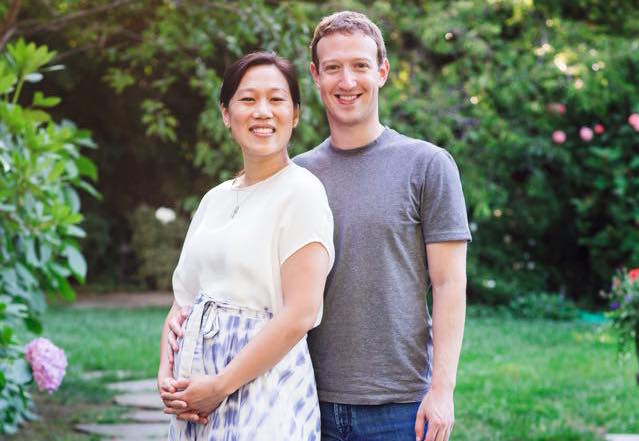
Facebook CEO Mark Zuckerberg and his wife, Priscilla Chan, made a shocking announcement this week, saying they would donate 99 percent of their financial worth over their lifetimes.
Though the charitable act would have several tax benefits, as The New York Times pointed out, the power couple said they hope to use that money to "advance human potential and promote equality for all children in the next generation," according to a long post by Zuckerberg on his Facebook page.
In focusing on philanthropy, the duo joins other high-profile billionaires, such as Warren Buffett and Bill Gates, who have committed vast sums of money in an effort to reduce poverty and improve conditions around the world. [5 Facts About the Wealthiest 1 Percent]
Right now, the couple's wealth amounts to an estimated $45 billion — equivalent to the entire economic output of Turkmenistan or Tanzania, and about enough to send each of the more than 117 million households in the United States a check for $380, with still a little bit left over. From funding the entire National Science Foundation for almost six years, to buying dozens of private islands, here are some of the things their enormous wealth could buy.
Furthering science
Zuckerberg and Chan's wealth could fund a significant portion of the federally supported scientific research in the country for a year: NASA's 2014 budget was $17.8 billion, while the National Institutes of Health's 2015 budget was $30.4 billion. The National Science Foundation's budget is estimated to be $7.7 billion for 2016.
The couple could also help develop more than 37 new Food and Drug Administration-approved drugs, given that the average cost of getting a new drug to market from start to finish is about $1.2 billion, according to a financial report by the Analysis Group.
Sign up for the Live Science daily newsletter now
Get the world’s most fascinating discoveries delivered straight to your inbox.
The duo could also finance trips to the moon — about 60 of them. A space tourism company called the Golden Spike is officially funding round-trip tickets to the moon, with a sticker price of about $750 million.
Hedonistic route
If Zuckerberg and Chan were to follow the example of other billionaires, a host of outlandish luxuries could be theirs, from a floating magnetic bed ($1.2 million), a gold-plated sports car ($10 million), the world-famous Burmese ruby ($30 million) and the most expensive painting ever sold at auction (A Paul Gauguin work that sold for nearly $300 million in February). But even those purchases wouldn't make a dent in their ginormous pile of cash.
It takes bigger thinking to use up $45 billion — for example, you could buy 30 of the world's most valuable sports teams.
Or, they could emulate the similarly wealthy Larry Ellison, the former CEO of Oracle (net worth: $48.6 billion). Ellison made news last year when he bought the Hawaiian island of Lanai for $300 million.
Of course, even that wouldn't come close to depleting the $45 billion. For instance, the most expensive private island for sale on the website Privateislands.com is picturesque Rangyai Island, Thailand. The 110-acre gem costs $160 million, but that means the couple could buy 281 similarly priced islands before running out of cash.
Zuckerberg and Chan may ultimately be living on just 1 percent of this net worth, but don't feel too bad for them. They still have that 700-acre plantation in Kauai, four houses in Palo Alto and a gorgeous hilltop pad in San Francisco. And the $450 million they'll be left with after all that giving will probably be enough for them to squeak by comfortably for the rest of their lives. Just barely.
Follow Tia Ghose on Twitterand Google+. Follow Live Science @livescience, Facebook & Google+. Original article on Live Science.

Tia is the managing editor and was previously a senior writer for Live Science. Her work has appeared in Scientific American, Wired.com and other outlets. She holds a master's degree in bioengineering from the University of Washington, a graduate certificate in science writing from UC Santa Cruz and a bachelor's degree in mechanical engineering from the University of Texas at Austin. Tia was part of a team at the Milwaukee Journal Sentinel that published the Empty Cradles series on preterm births, which won multiple awards, including the 2012 Casey Medal for Meritorious Journalism.









